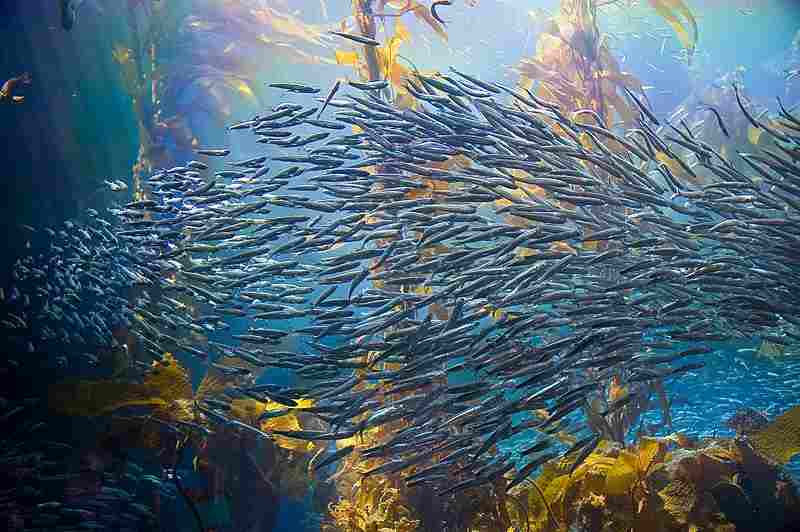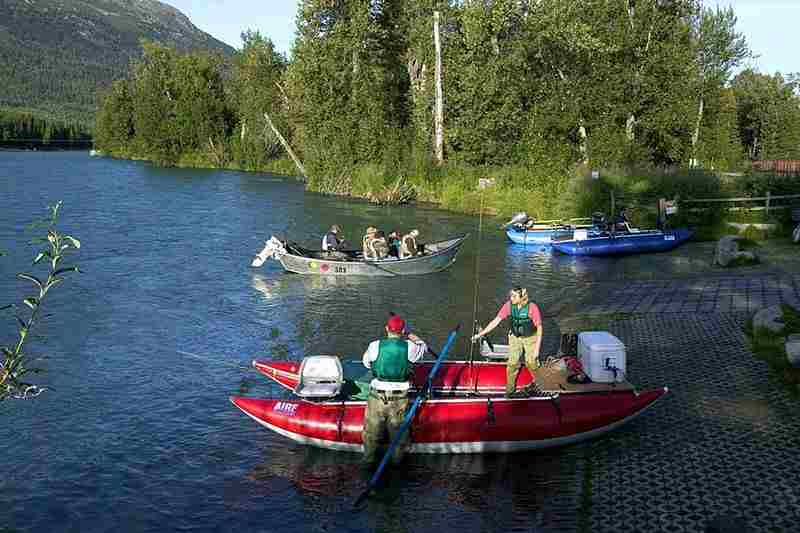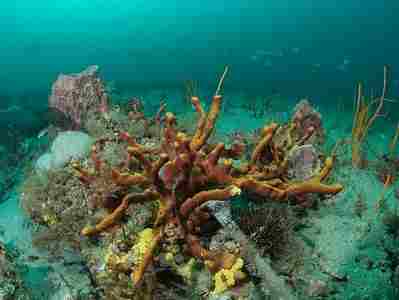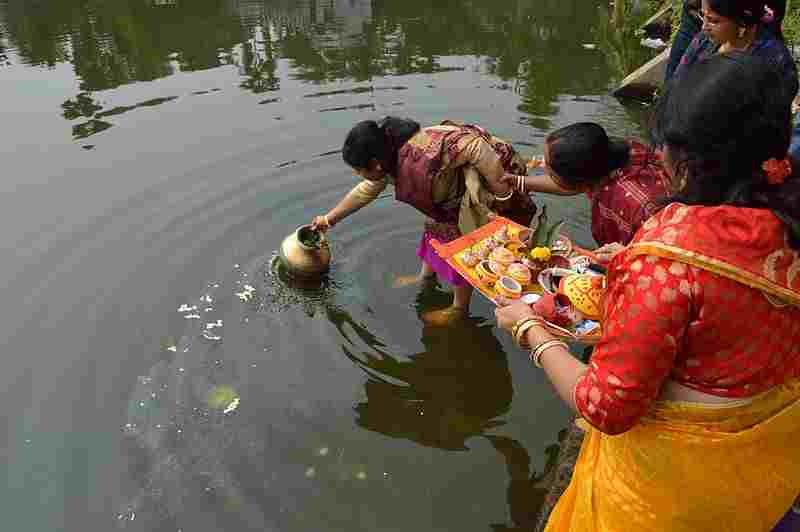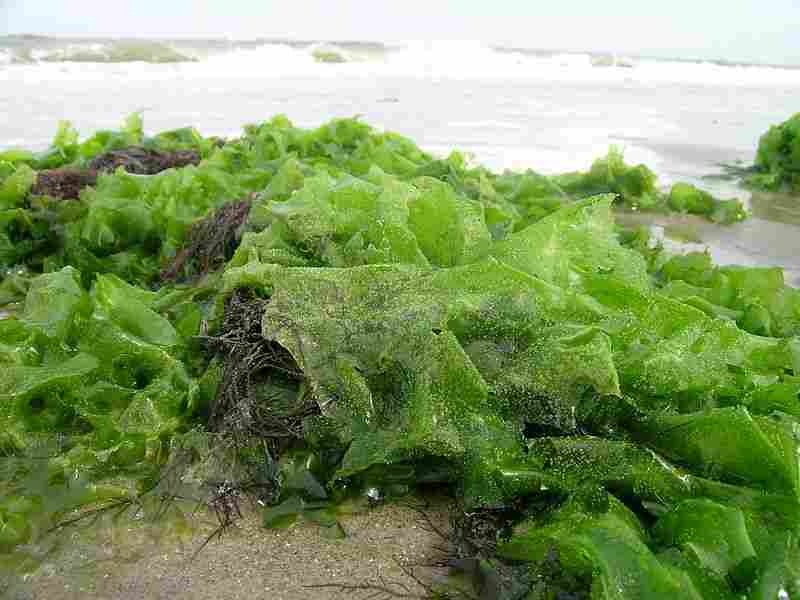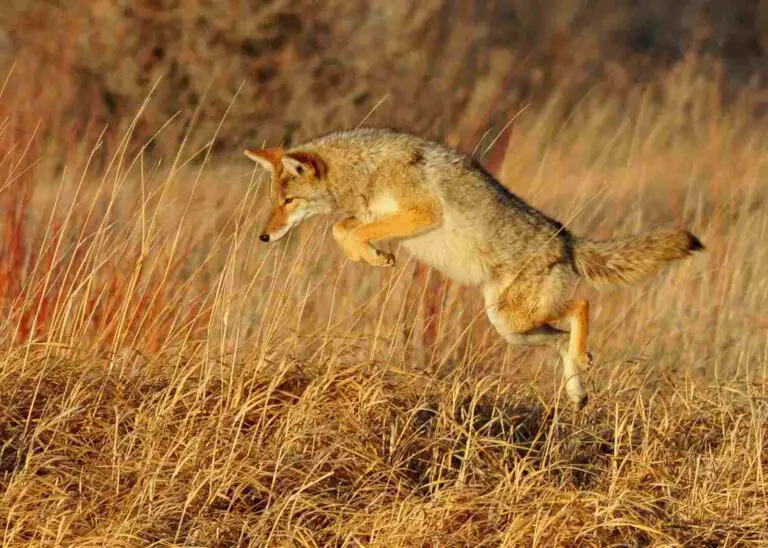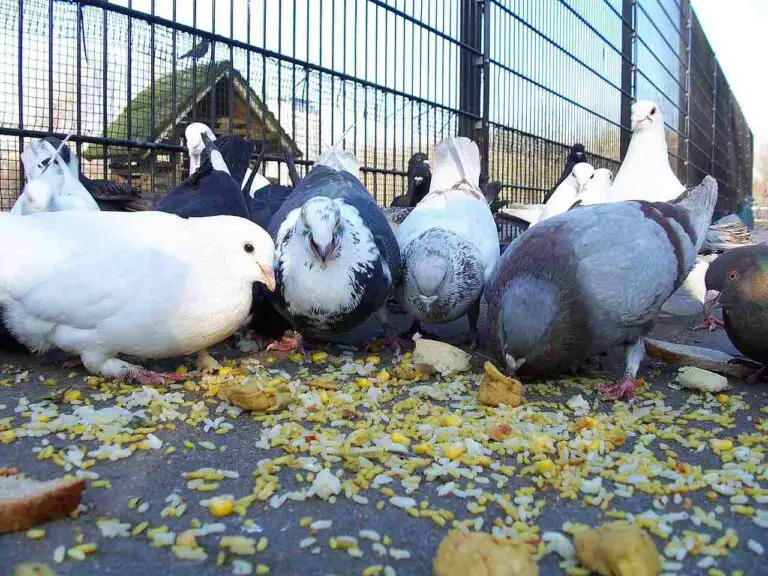7+ Facts About Kelp Forests and Their Attributes
Facts about kelp forests include; dominance of macroalgae, high biodiversity, rapid growth rate, cool and shallow location, carbon storage function, availability of food resources, role in erosion mitigation, inclusion as a manufacturing ingredient, and close relation to other coastal ecosystems.
This article discusses some key facts about kelp forests, as follows;
1). Macroalgae are Often the Most Dominant Autotrophs (as one of the Facts About Kelp Forests)
Kelp forests, which are one of the most biodiverse and productive marine ecosystems, are often dominated by macroalgae, which makes these organisms the most dominant autotrophs in kelp habitats.
Also referred to as seaweed, macroalgae have a critical role to play in the functioning, composition and structure of kelp forests.
Below is an outline explaining why macroalgae are frequently the dominant autotrophs in these ecosystems, as well as their functions as core biotic components of the kelp habitat.
Dominance and Functions of Macroalgae in the Kelp Forest
Macroalgae are dominant in kelp forests because of their high primary production efficiency, competitive advantage, contribution to food web/chain foundations, nutrient recycling, food provision, and oxygen production.
As primary producers, macroalgae are known to be highly efficient [1]. They carry out photosynthesis, thereby converting solar radiation (in the form of light) into chemical bioenergy and organic matter/biomass. This makes them critical for the input of essential resources like nutrients and energy, into the kelp forest ecosystem.
Various specialized adaptations are possessed by macroalgae, that allow them to thrive in kelp forest environments. They are well-suited to compete for light, nutrients and space, with other autotrophs. Their ability to grow rapidly and form expensive, dense mats (or beds) gives them a competitive advantage over other autotrophic organisms with less dominant characteristics.
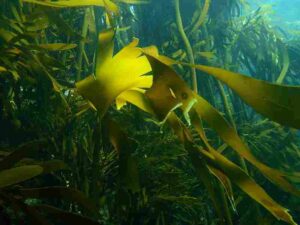
In kelp forests, macroalgae often function as foundation species. They create the physical ecologic structure of the habitat, providing shelter, anchorage and food resources for a wide range of organisms, from microbes and macroscopic invertebrates to fish. The structural complexity of kelp forests is largely supported by macroalgal ecosystem-services, and is vital for the overall biodiversity and sustainability of the ecosystem.
Macroalgae play a key role in the cycling of nutrients within kelp forests. They are capable of taking up nutrients from the surrounding water, including phosphorus, potassium, sulfur and nitrogen, and incorporating these nutrients into their tissues [3].
When macroalgae are grazed upon (by herbivores, omnivores) or die, these nutrients are released back into the resource-pool of the ecosystem, fueling the food chain.
Macroalgae serve as a primary food source for herbivorous and omnivorous organisms within the kelp forest. Sea urchins, mollusks, and various species of fish consume macroalgae, forming an essential component of the marine food web.
Lastly, like all autotrophs, macroalgae contribute to oxygen production through the process of photosynthesis. They are responsible for a significant portion of the oxygen production on Earth [12], and play a determinant role in maintaining the biogeochemical oxygen cycle of the oceans.
2). Kelp Forests are Among the Most Biodiverse Marine Ecosystems
Another fact about kelp forests is their remarkable biodiversity, for which they are considered some of the most diverse marine ecosystems in the world.
Below is a concise discussion of the aspects and relevance of kelp forest diversity.
Aspects and Functions of Kelp Forest Biodiversity
The biodiversity of kelp forests can be analyzed in terms of its species richness, presence of keystone and foundation species, complexity, abundance of primary producers, continuity of food supply, as well as its functions as a transitional zone and site of carbon capture.
Typically, kelp forests are home to a wide variety of organic species, which range from the towering kelp themselves to an array of marine animals. These animals include fish, crustaceans, mollusks, marine mammals, and birds [2]. The diverse community of species that inhabit kelp forests is what makes them sustainable and productive.
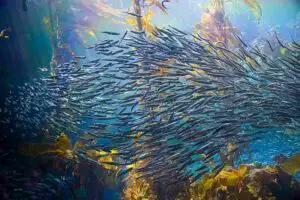
Kelp, which (as discussed earlier) is the dominant autotrophic organism in these ecosystems, has a foundational role to play. They provide the physical structure for the habitat, by creating a three-dimensional environment in which many species can attach, find refuge, and forage.
The structural complexity of kelp forests, with their extensive/expansive kelp fronds and variable underwater landscape, provides numerous ecological niches for different species. This complexity is one of the factors that promote biodiversity, by fostering a multitude of interactions (and opportunities for energy transfer) among organisms.
Macroalgae, phytoplankton, and hydrophytes, are primary producers in kelp forests. These autotrophs conduct photosynthesis to convert sunlight into chemical energy and organic matter. Their activities form the base of the food web in kelp forests, and support an overlying hierarchy of trophic levels.
Due to their complexity and productivity, kelp forests are usually able offer a continuous food supply to local organisms. The consistent availability of food makes them attractive habitats for grazers and, consequently, for predatory species that feed on these herbivores.
Kelp forests are often located in transitional zones between shallow coastal areas and the open ocean [5]. These zones attract a variety of species that utilize the kelp forests as feeding grounds, seasonal breeding sites, or nurseries for their young.
Also owing to their productivity, kelp forests are effective in carbon capture and storage, so that they help to mitigate climate change. They are among the most productive marine ecosystems, with high rates of carbon fixation.
3). Kelps Have a Relatively Rapid Growth Rate (as one of the Facts About Kelp Forests)
Kelps, particularly the giant kelp, are known for their remarkably rapid rate of growth, which makes them one of the fastest-growing organisms on Earth.
This section highlights some key points about the fast growth of kelp.
Key Points About the Fast Growth of Kelp Macroalgae
Under ideal conditions, giant kelp are capable of growing at an astonishing rate of up to two feet (about 60 centimeters) per day.
This remarkable growth rate enables them to form massive underwater forests within a relatively short period.
Under typical conditions, giant kelp can still grow at an impressive rate of about three to five inches (7–13 centimeters) daily within controlled environments. In the wild, they can achieve a growth rate of about 10 to 12 inches (25–30.5 centimeters) per day, especially in nutrient-rich coastal zones.
In maturity, giant kelp can reach an average length of approximately 100 feet (30.5 meters), although in optimal environments, they can extend beyond this up to 175 feet (53 meters). It must be noted that achieving these lengths requires sustained rapid growth over time.
The life cycle of kelps comprises of two stages; including a spore-dominated (diploid sporophyte) and gametophyte-dominated (haploid gametophyte) phase respectively [4].
Generally, the kelp alga commences its life as a sporophyte (or nonsexual individual) which subsequently develops into male or female. These sexual organisms produce sperm or eggs, which are involved in fertilization and subsequent growth of mature kelps.
Environmental factors that influence kelp growth include nutrient availability, sunlight, water salinity and temperature. Optimal availability of sunlight, and nutrient-rich waters tend to promote faster growth.
Marine habitats formed by kelps occur in as dense underwater forests in cool, shallow waters located close to the shore [13]. These forests provide critical habitats for a broad range of marine species.
While the growth rates of kelps remain relatively constant for most of the year, there can be declines during the summer months, likely as a result of changes in environmental conditions.
4). Most Kelp Forests Occur in Cool and Shallow Waters
Kelp forests are renowned for their unique characteristics, and are primarily found in cool and shallow waters. Some important points about the location and attributes of kelp forests are discussed below;
Location and Characteristics of Kelp Forests
The habitat conditions under which kelp forests thrive include the presence of cold and nutrient-rich waters. These conditions are essential for the growth of the kelp, which relies on nutrients for its photosynthetic growth.
Kelp forests are typically found in relatively shallow open waters. They rarely occur at depth greater than 49 to 131 feet (15 to 40 meters). The shallow waters provide the required access to sunlight for kelp to carry out photosynthesis.
Majority of kelp forests are situated along the Pacific Coast. They stretch from the northern regions of Canada and Alaska, down to the waters of Baja California in Mexico. This vast geographical range along the Pacific coastline makes it one of the most expansive habitats for kelp forests.
As earlier discussed, kelp forests are rich in biodiversity, serving as important habitats for various marine species. They contribute immensely to the ecological dynamics of coastal ecosystems.
Various species of kelp are found in these shallow waters. Sea Cabbage, also known as sweet kombu (Saccharina sessilis) is an example of a perennial kelp that resides in shallow subtidal to mid-intertidal areas.
Although kelp forests are traditionally associated with cool waters, there have been discoveries of kelp forests in tropical regions, such as the Galapagos Islands [11]. These findings are indicative of the adaptability of kelp to diverse environmental conditions.
While kelp forests predominantly occur along the Pacific Coast, smaller areas of anchored kelp beds are found in various coastal regions around the world.
5). Carbon Sequestration is a Function of Kelp Forests (as one of the Facts About Kelp Forests)
Kelp forests are crucial in regional carbon sequestration, which is simply the process of capturing and storing carbon dioxide (CO2) from the atmosphere. This section discusses how kelp contributes to carbon sequestration and provides some insights into its functions.
Through a process known as carbon fixation, kelp forests have the remarkable ability to sequester carbon. As kelp grows, it absorbs carbon dioxide (CO2) from the water column. This CO2 which has been absorbed, is then converted into organic matter through photosynthesis; the fundamental process in which sunlight is used to synthesize organic compounds from inorganic raw materials including CO2 and water.
The organic matter produced during photosynthesis is stored in the form of kelp biomass. This biomass consists of stored carbon and other minerals used in photosynthesis, which can remain preserved in the kelp forests for extended periods.
Kelp forests have significant potential to offset carbon emissions. On a global scale, seaweeds, including kelp, are estimated to over 150 million tons of CO2 annually. This carbon sequestration capacity is almost comparable to the annual emissions of high-emitting provinces like New York State.
Beyond their role in carbon sequestration, kelp forests serve as vibrant marine sub-biomes. They provide critical habitats for a broad variety of marine organisms, including fish, mollusks, crustaceans, and some marine mammals. Kelp forests are renowned for their high level of biodiversity, as they host more plant and animal species than many other ocean communities.
The impressive growth rate also contributes to its ability to capture carbon efficiently. Some species of kelp can grow as much as several tens of centimeters per day, absorbing substantial amounts of carbon during this rapid growth phase.
Due to their sequestration capacity as carbon sinks, kelp forests are considered a major repository of "blue carbon." Research suggests that they are able to capture and sequester carbon at a faster rate than terrestrial forests.
As part of coastal ecosystems, kelp forests have the potential to sequester significant amounts of carbon and transport it to the open ocean and deep sea when parts of the kelp become detached (from the bed) and sink.
6). Both Shelter and Food Resources are Often Abundant for Kelp Inhabitants
Kelp forests are known for their capacity to continuously provide both shelter and food resources for a diverse community of marine autotrophs and heterotrophs, including saprophytes.
An overview of the common inhabitants of kelp communities, and the role kelp plays as a habitat, is provided in this section.
Common Inhabitants and Ecological Roles of Kelp Forests
Kelp forests generally host a rich and diverse community of marine life due to their abundant and continuous food supply. These ecosystems are characterized by their high productivity that enables them support a multitude of species.
Among the most common inhabitants of kelp communities are various species of marine life, including invertebrates like worms, mollusks, brittlestars; anemones, crustaceans; and vertebrates like seals, fish, sea lions and otters.
Kelp itself serves as a continuous source of food within these ecosystems. The high productivity of kelp forests ensures that abundant food resources are provided for a variety of herbivores, including fish, urchins, some crustaceans, and marine snails.
Various marine mammals find shelter in kelp forests. These include animals like seals, sea lions, and grey whales which use the thick kelp blades to protect their young and seek refuge from intense storms or predators. Sea otters, in particular, are known to wrap themselves in kelp in order to prevent drifting away while they sleep.
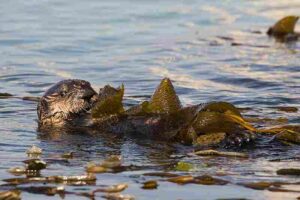
Kelp macroalgae are often described as "foundation species" or ecosystem engineers, because they create forest-like habitats that foster the survival of a wide range of life forms, from microbes small invertebrates to fish and mammals.
In addition to the provision of abundant food and shelter, kelp forests play a significant role in protecting and nurturing marine life along rocky, cold-water coastlines. They contribute to the overall biodiversity and health of these ecosystems.
The extent and productivity of kelp forest habitat is linked to the abundance of fisheries resources. Increased abundance of food resources and shelter within kelp forests, can positively influence marine fisheries by providing suitable conditions for various species.
7). Kelp Beds may Mitigate Coastal Erosion (as one of the Facts About Kelp Forests)
Kelp beds, with their remarkable growth and dense structure, can be effective at mitigating coastal erosion.
This section summarily discussed their role in combating erosion and provided some insights into coastal erosion solutions.
Role of Kelp Forests in Mitigating Coastal Erosion
Kelp forests provide a mechanical buffer against wave action, reduce longshore currents, and offer numerous ecosystem benefits to coastal areas.
A valuable buffer against the impact of wave energy in nearshore environments, is provided by kelp forests [8]. The effectiveness of this buffer is notable during severe storms along the West Coast. Dense kelp growth acts as a natural barrier that helps prevent coastal erosion by the absorption and dispersal of wave energy.
Kelp beds have the capacity to reduce the intensity of longshore currents and incoming waves. In addition, they can create localized onshore currents that promote the movement of sediment toward the coast. This sediment movement helps to build up and stabilize the shorelines, thereby reducing erosion over time.
A range of ecosystem services and benefits can be attributed to kelp forests, which make them essential for coastal resilience. These forests offer food, shelter and nursery areas, for a diverse array of fish species with commercial and recreational importance. Additionally, they provide crucial protection from predators, extreme tidal influence, and storm events for marine wildlife along the West Coast.
Solutions to Coastal Erosion
Solutions to coastal erosion include the implementation of various measures such as; installation of coastal protection structures, beach nourishment, vegetation planting, and managed retreat.
Structures like seawalls, bulkheads, revetments, breakwaters and groins, can be deployed to reduce coastal erosion in the short term [9]. However, these structures are often accompanied by high initial investment costs and may have adverse long-term impacts on coastlines, including altered sediment dynamics, unfavorable geomorphic changes, and increased erosion in adjacent areas.
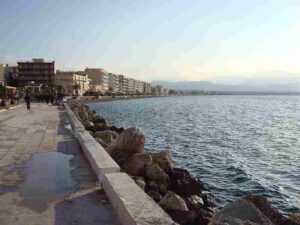
Beach nourishment is another potential solution to coastal erosion, and involves importing and depositing sediments like sand to replenish eroded beaches, thereby restoring natural shorelines, and providing additional protection from wave action.
Planting vegetation, such as mangroves and native dune grasses, can stabilize coastlines, reduce erosion, and improve natural defenses against storm surges.
In some cases, it may be necessary to move existing structures and infrastructure further inland, to allow coastal areas to return to a more natural state, thereby mitigating erosion by the reduction of human interference.
Benefits of Kelp in the Ocean
The benefits of kelp in the ocean extend beyond erosion mitigation, to include biodiversity support, carbon sequestration, habitat and shelter provision, and ocean health.
Kelp forests are biodiversity hotspots, as they support a broad variety of marine life, including microbes; fish, invertebrates, and marine mammals.
As mentioned earlier, kelp forests play a major role in carbon sequestration by absorbing and storing carbon dioxide through the process of photosynthesis.
Kelp provides suitable habitat and shelter for some marine species, offering them protection from predators, and acting as a nursing ground for many economically and ecologically valuable fish species.
Lastly, kelp ecosystems contribute to overall ocean health by enhancing water quality, supporting fisheries, and providing multiple ecosystem services.
8). Several Products Include Kelp as a Manufacturing Ingredient
As a result of its diverse properties and benefits, kelp finds applications in various products across different sectors. This section contains an overview of how kelp is used in manufacturing, and highlights some examples of products made with kelp.
Manufacturing Sectors Where Kelp is Used
Kelp is used as a raw material in various manufacturing sectors including; food and agriculture, personal care, and biodegradable plastic industries respectively.
A wide range of food products utilize kelp as an important ingredient. It can be found in items like salad dressings, puddings, frozen foods, cakes, dairy products, and pharmaceuticals. Kelp is known for its salty, crisp and savory attributes, which enhance the richness of food with a subtle flavor known as "umami." It also contains vitamins, minerals, and iodine, making it a valuable nutritional ingredient.
The unique properties of kelp make it a valuable ingredient in personal care products. It can be found in items like shampoos, toothpaste, skincare creams, and makeup products. Kelp's natural characteristics are often leveraged for their benefits in these products.
Kelp has potential applications in the manufacture of biodegradable plastics [7]. As an eco-friendly alternative raw material, it contributes to the reduction of plastic pollution and promotion of sustainability.
Another product in which kelp is used id animal feed, as it provides essential nutrients and enhances the nutritional value of animal diets.
The use of kelp extends to crop farming and soil conservation, where it can serve as a natural fertilizer and soil conditioner, for enriching soil and promoting plant growth.
Specific Examples of Products Made With Seaweed or Kelp
Examples of products made with seaweed or kelp include shampoos, skincare creams, makeup products, ice cream, toothpaste, and yogurt. They are enumerated below;
1. Seaweed extracts are used in shampoos to provide hair with essential nutrients and promote healthy hair growth.
2. Skincare products based on seaweed are known for their moisturizing and rejuvenating properties.
3. Some makeup products incorporate seaweed extracts for their skin-friendly and natural properties.
4. Carrageenan; a polysaccharide extract from seaweed, may be used in ice cream as a stabilizer or thickening agent [6].
5. Seaweed-based toothpaste may contain natural ingredients for oral health benefits, as kelp extracts may function as an anti-collagenase agent, and deplete oral pathogens
6. Like ice creams, seaweed extracts can sometimes be found in yogurt for their nutritional value.
9). Kelp Forests are Closely Related to Other Coastal Marine Ecosystems (as one of the Facts About Kelp Forests)
Kelp forests are intricate and vital ecosystems, which are closely tied to other coastal marine environments. This section discusses how kelp forests are related to these ecosystems.
How Kelp Forests are Related to Other Coastal Marine Ecosystems
Kelp forests are related to other coastal marine ecosystems through spatial connectivity, and shared functions like nursery ground provision, protection from erosion, nutrient cycling, biodiversity sheltering, and energy transfer facilitation.
Habitat connectivity between kelp forests and other coastal ecosystems is relatively high, as the kelp forests serve as critical connectors between different coastal zones.
They often transition into seagrass beds, open ocean environments, and rocky intertidal zones. This ecogeographical connectivity allows for the migration of marine species between these habitats, thereby facilitating biodiversity and ecological equilibrium.
Kelp forests are breeding and nursery sites for numerous marine species [10]. Many of these species are temporary inhabitants, and later migrate to adjacent ecosystems as adults, contributing to the health and productivity of surrounding coastal areas.
Erosion can be mitigated across the entire coastal zone by kelp beds which reduce the force of waves and longshore currents. Their presence can help stabilize coastlines, protecting other adjacent habitats like sandy beaches and rocky shores.
Kelp forests play a versatile role in nutrient cycling within coastal environments. They absorb and release nutrients, and influence both water quality and nutrient availability for neighboring habitats.
The primary production of kelp forests, which driven by photosynthesis, contributes to sustaining the flow of energy throughout the coastal food web. Organisms within and outside the kelp forest usually benefit from this energy transfer.
Kelp forests often intersect with human activities such as fishing, agriculture and recreation. Sustainable management of these ecosystems is therefore critical to maintaining their integrity as well as their interconnectedness with other coastal ecosystems.
Conclusion
Facts about kelp forests include;
1. Macroalgae are Often the Most Dominant Autotrophs
2. Kelp Forests are Among the Most Biodiverse Marine Ecosystems
3. Kelps Have a Relatively Rapid Growth Rate
4. Most Kelp Forests Occur in Cool and Shallow Waters
5. Carbon Sequestration is a Function of Kelp Forests
6. Both Shelter and Food Resources are Often Abundant for Kelp Inhabitants
7. Kelp Beds may Mitigate Coastal Erosion
8. Several Products Include Kelp as a Manufacturing Ingredient
9. Kelp Forests are Closely Related to Other Coastal Marine Ecosystems
References
1). Balina, K.; Romagnoli, F.; Pastare, L.; Blumberga, D. (2017). "Use of Macroalgae for Bioenergy Production in Latvia: Review on Potential Availability of Marine Coastline Species." Energy Procedia 113:403-410. Available at: https://doi.org/10.1016/j.egypro.2017.04.022. (Accessed 21 September 2023).
2). Christie, H.; Bekkby, T.; Norderhaug, K. M.; Beyer, J.; Jørgensen, N. M. (2019). "Can sea urchin grazing of kelp forests in the Arctic make rocky shore systems more vulnerable to oil spills?" Polar Biology 42(10). Available at: https://doi.org/10.1007/s00300-018-02450-8. (Accessed 21 September 2023).
3). Hauxwell, J.; Jacoby, C.; Frazer, T. K.; Stevely, J. (2001). "NUTRIENTS AND FLORIDA'S COASTAL WATERS NUTRIENTS AND FLORIDA'S COASTAL WATERS." Available at: https://www.academia.edu/9877040/NUTRIENTS_AND_FLORIDAS_COASTAL_WATERS_NUTRIENTS_AND_FLORIDAS_COASTAL_WATERS. (Accessed 21 September 2023).
4). Heesch, S.; Serrano, M. L. S.; Barrera-Redondo, J.; Luthringer, R.; Peters, A. F.; Destombe, C.; Cock, J. M.; Valero, M.; Roze, D.; Salamin, N.; Coelho, S. (2021). "Evolution of life cycles and reproductive traits: Insights from the brown algae." Journal of Evolutionary Biology 34(988). Available at: https://doi.org/10.1111/jeb.13880. (Accessed 21 September 2023).
5). Hofmann, G. E.; Smith, J. E.; Johnson, K. S.; Send, U.; Levin, L. A.; Micheli, F. Paytan, A.; Price, N. N.; Peterson, B.; Takeshita, Y.; Matson, P. G.; Crook, E. D.; Kroeker, K. J.; Gambi, M. C.; Rivest, E. B.; Frieder. C. A.; Yu, P. C.; Martz, T. R. (2011). "High-frequency dynamics of ocean pH: a multi-ecosystem comparison." PLoS One. 2011;6(12):e28983. Available at: https://doi.org/10.1371/journal.pone.0028983. (Accessed 21 September 2023).
6). Irawan, I.; Fitriyana. (2021). "Ice cream properties affected by carrageenan form seaweed deference type drying methods." IOP Conference Series Earth and Environmental Science 679(1):012022. Available at: https://doi.org/10.1088/1755-1315/679/1/012022. (Accessed 21 September 2023).
7). Lomartire, S.; Marques, J. C.; Gonçalves, A. M. M. (2022). "An Overview of the Alternative Use of Seaweeds to Produce Safe and Sustainable Bio-Packaging." Applied Sciences 12(6):3123. Available at: https://doi.org/10.3390/app12063123. (Accessed 21 September 2023).
8). Løvås, S. M.; Tørum, A. (2001). "Effect of the kelp Laminaria hyperborea upon sand dune erosion and water particle velocities." Coastal Engineering 44(1):37-63. Available at: https://doi.org/10.1016/S0378-3839(01)00021-7. (Accessed 21 September 2023).
9). Luo, S.; Cai, F.; Liu, H.; Lei, G.; Qi, H.; Su, X. (2014). "Adaptive measures adopted for risk reduction of coastal erosion in the People's Republic of China." Ocean & Coastal Management 103. Available at: https://doi.org/10.1016/j.ocecoaman.2014.08.008. (Accessed 21 September 2023).
10). Norderhaug, K. M.; Filbee-Dexter, K.; Carla, F.; Birkely, S.-R.; Christensen, L.; Mellerud, I.; Thormar, J.; Christiaan van Son, T.; Moy, F. E.; Vazquez, M.; Steen, H. (2020). "Ecosystem-level effects of large-scale disturbance in kelp forests." Marine Ecology Progress Series ITRS. Available at: https://doi.org/10.3354/meps13426. (Accessed 21 September 2023).
11). Santelices, B. (2008). "The discovery of kelp forests in deep-water habitats of tropical regions." Proceedings of the National Academy of Sciences 104(49):19163-4. Available at: https://doi.org/10.1073/pnas.0708963104. (Accessed 21 September 2023).
12). Soares D. A. P.; Rijo, B.; Santos, F.; Galhano Dos Santos, R.; Frade, T. (2023). "Overview on biofuels production in a seaweed biorefinery." Sci Total Environ. 2023 Aug 1;884:163714. Available at: https://doi.org/10.1016/j.scitotenv.2023.163714. (Accessed 21 September 2023).
13). Steneck, R. S.; Bustamante, R. H.; Dayton, P.; Jones, G. P. (2008). "Current status and future trends in kelp forest ecosystems." Available at: https://doi.org/10.1017/CBO9780511751790.021. (Accessed 21 September 2023).
